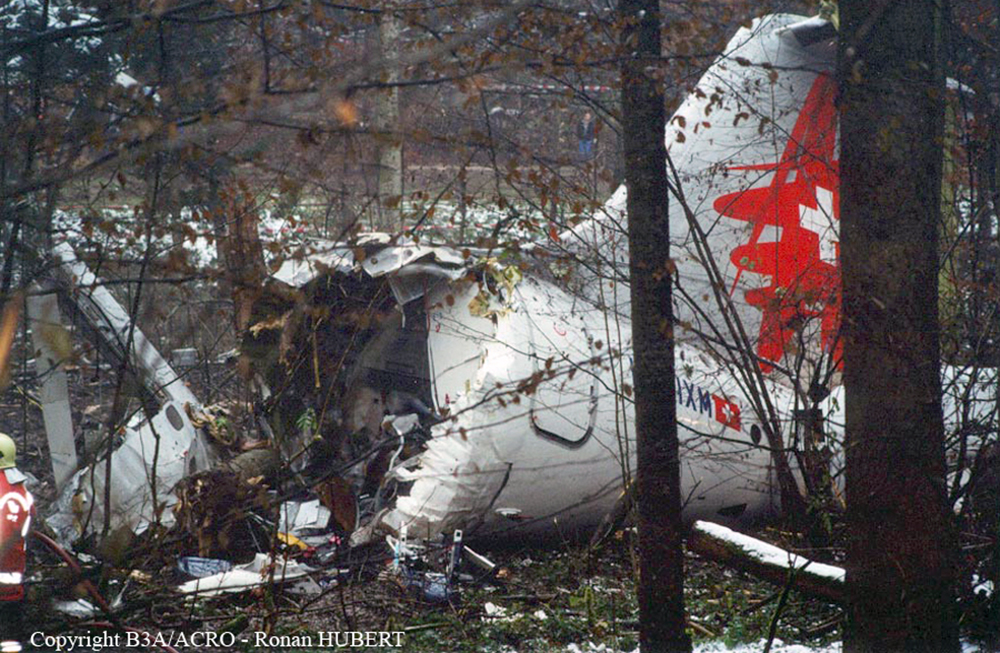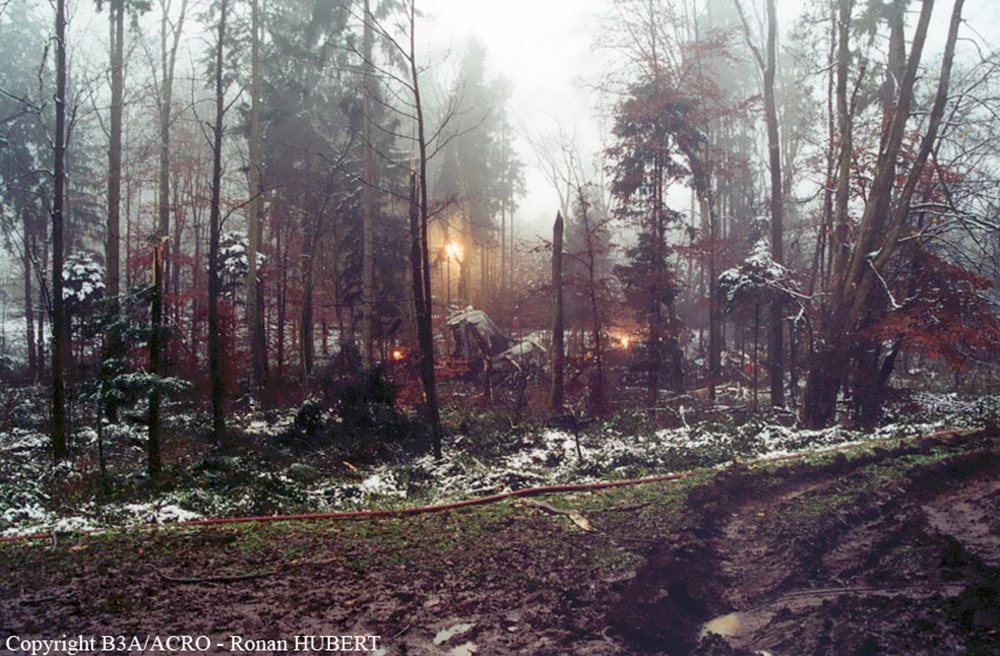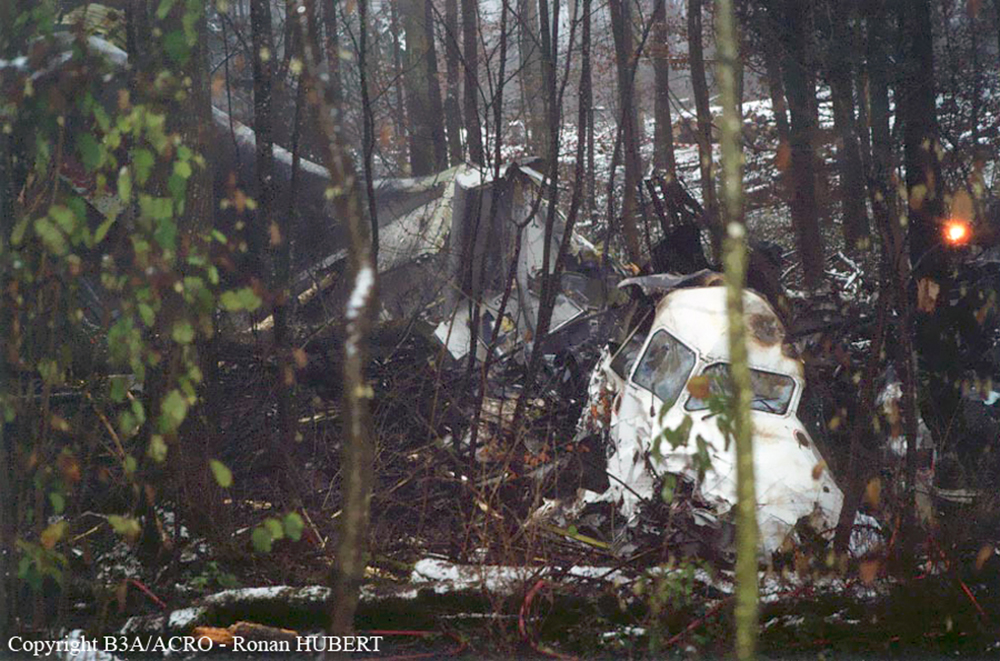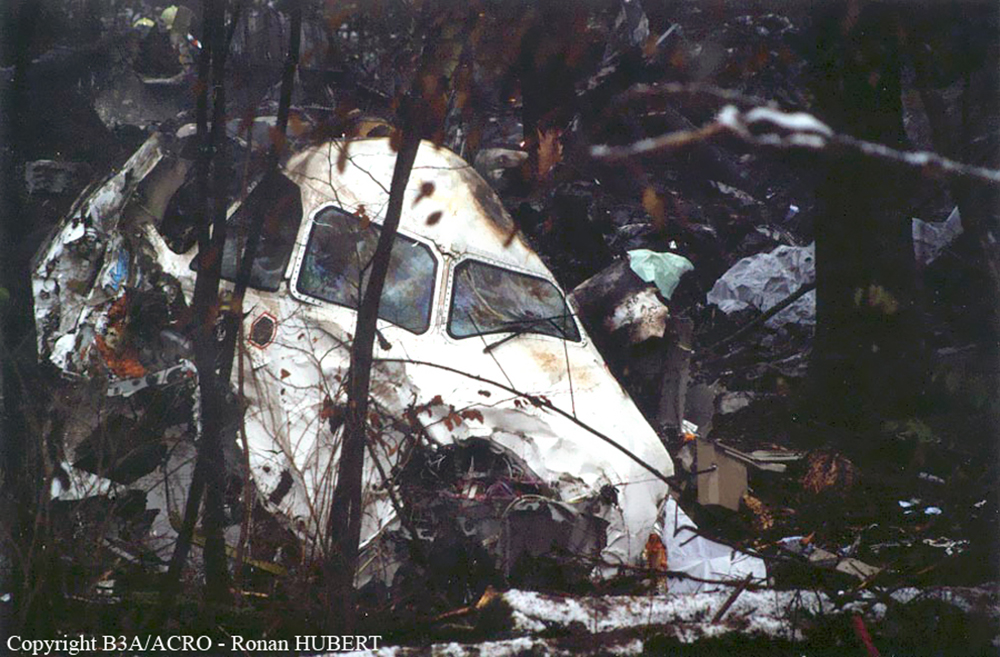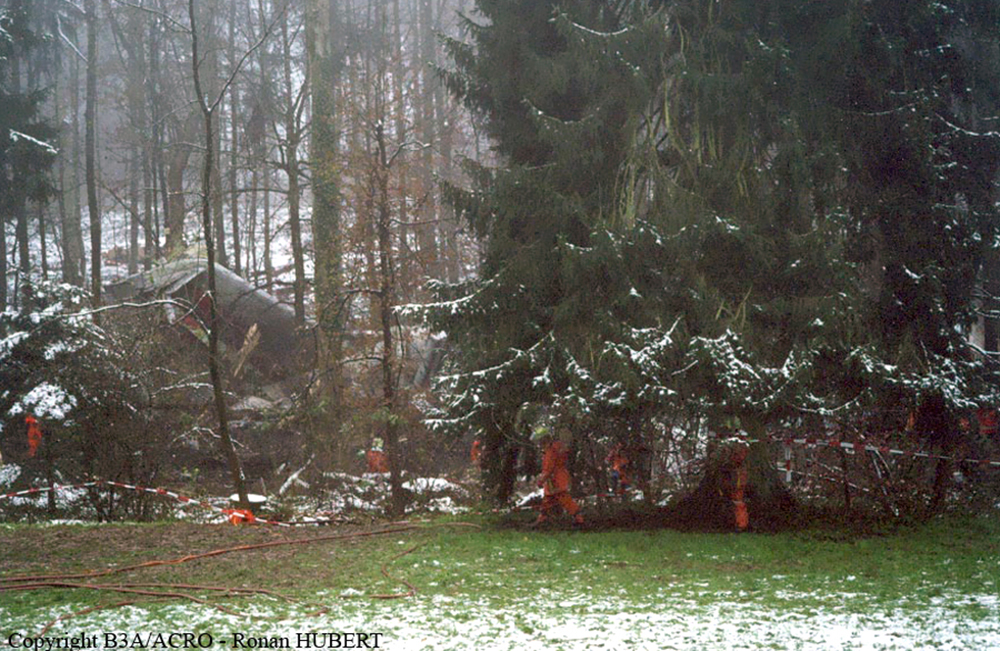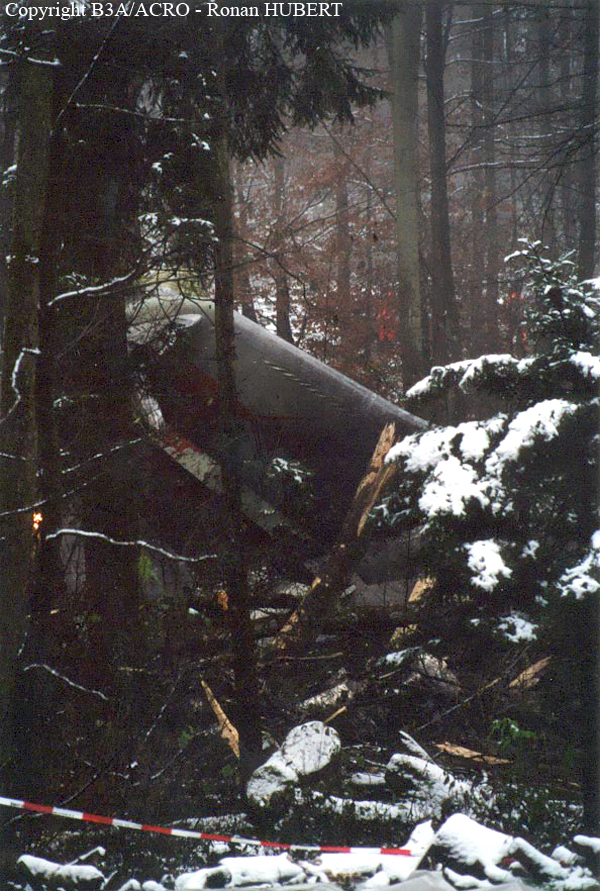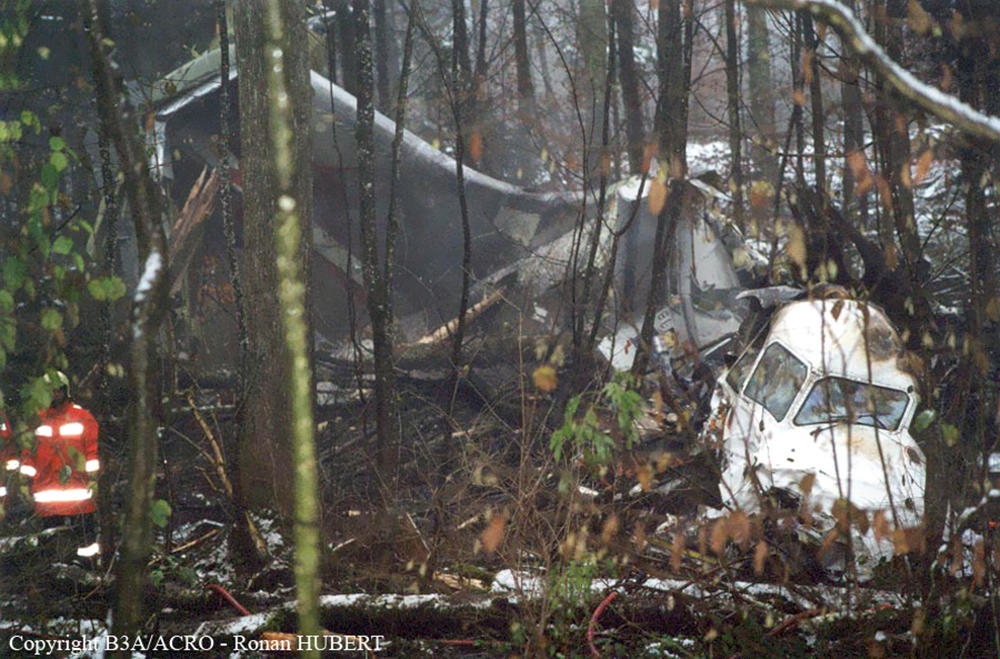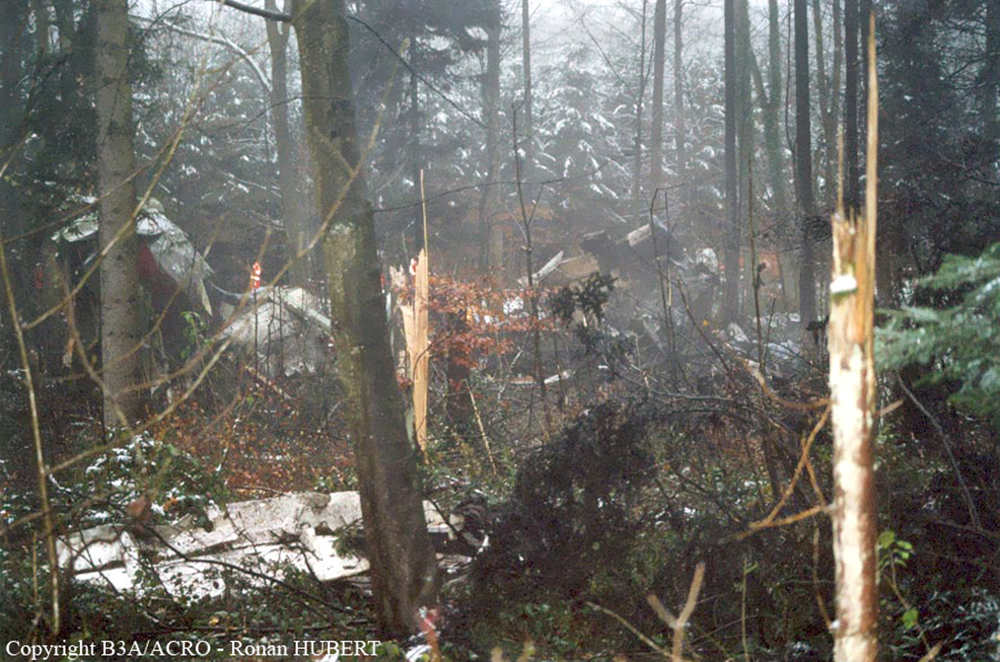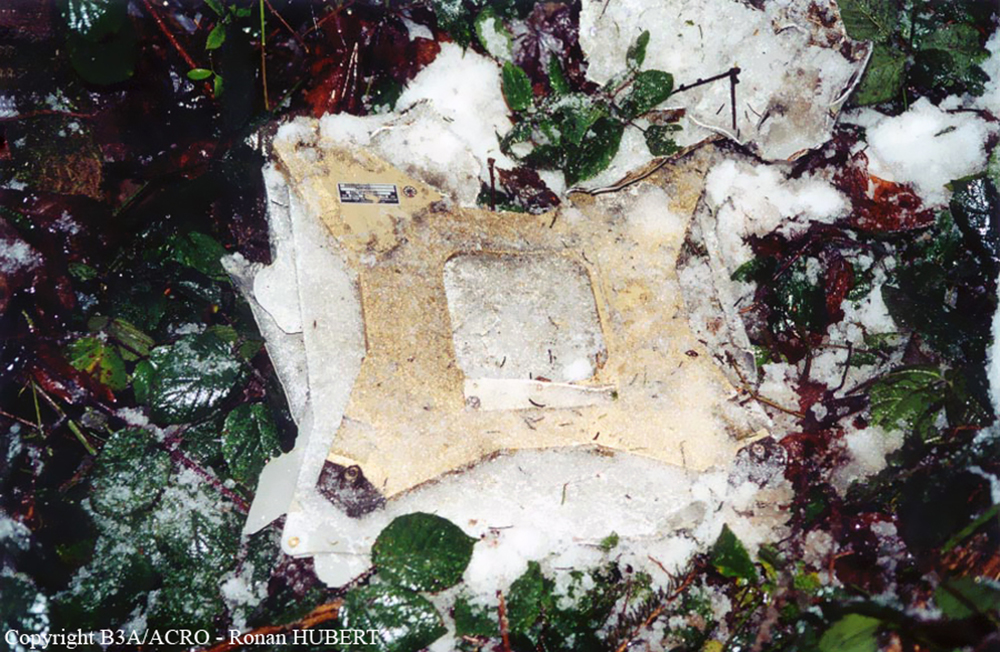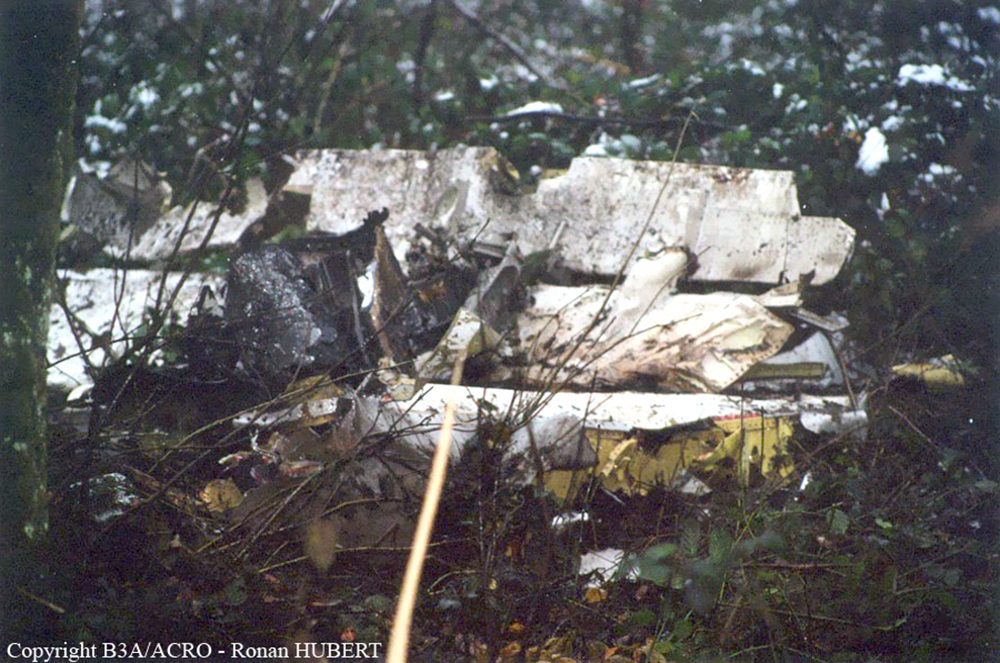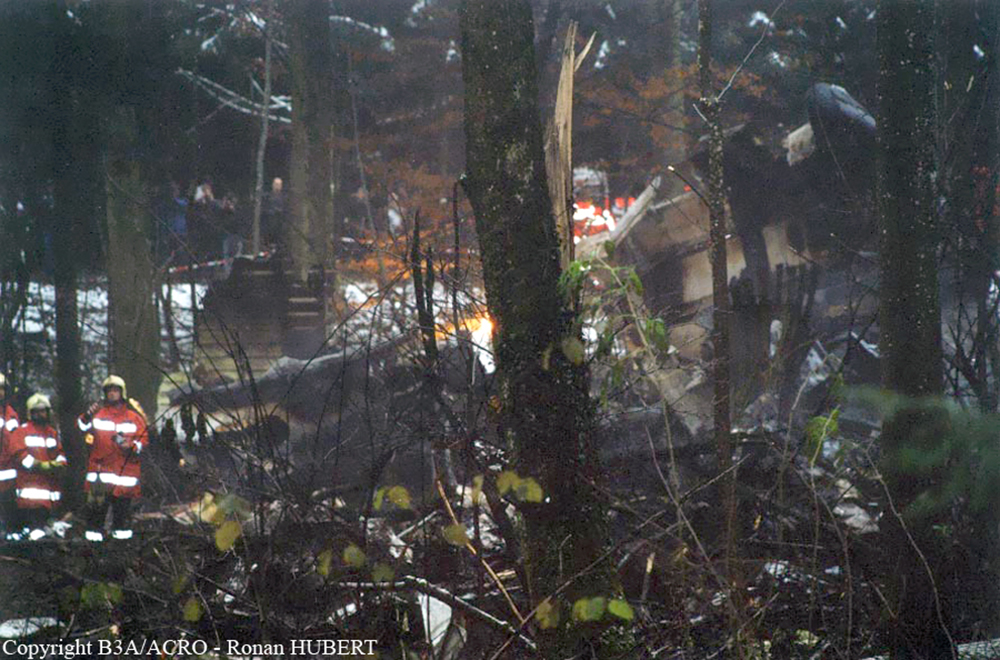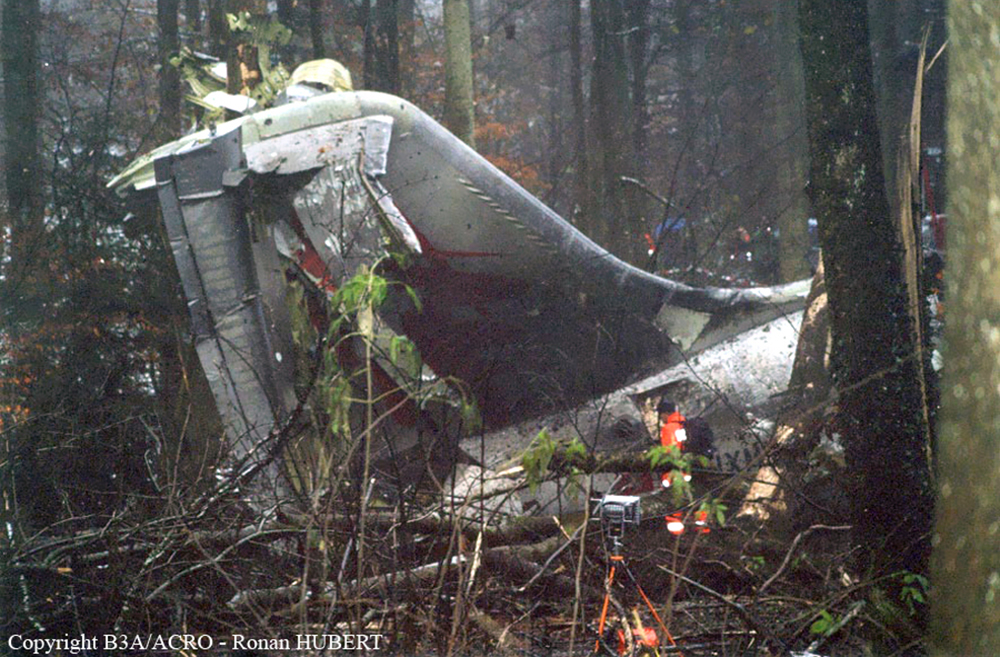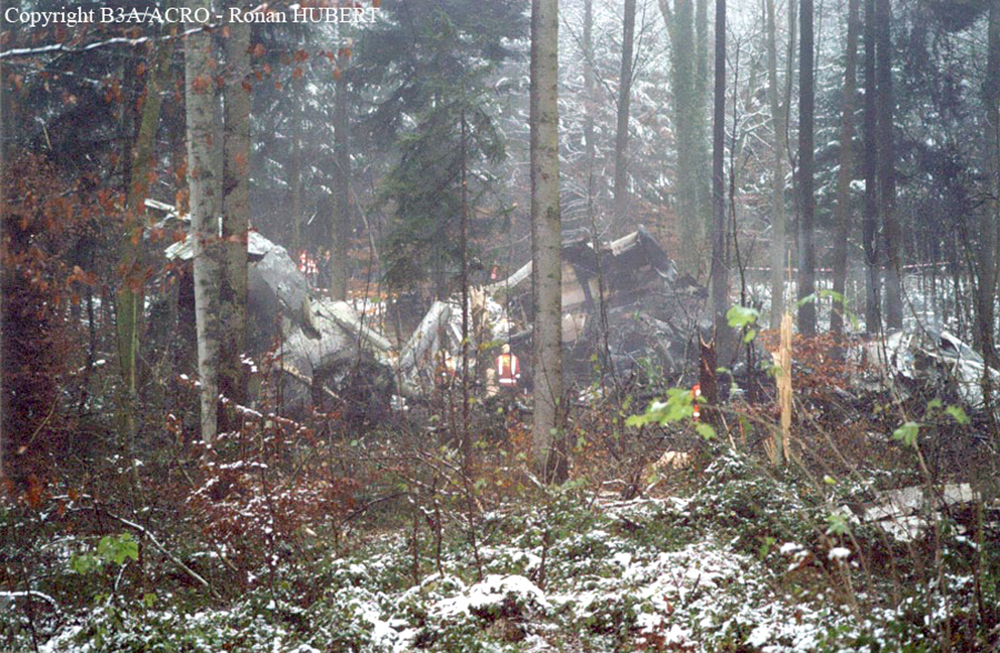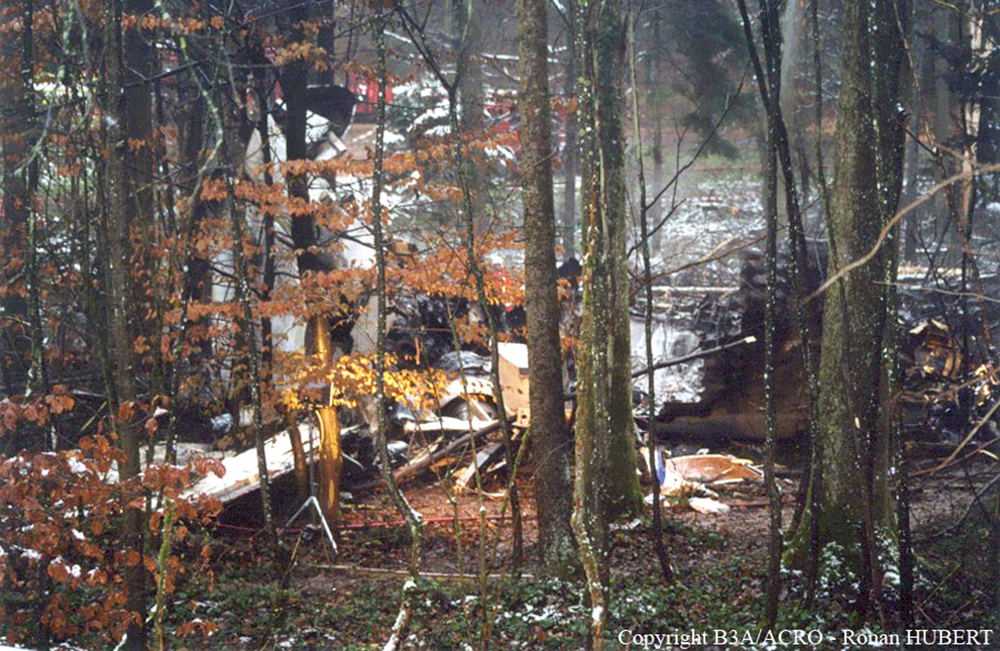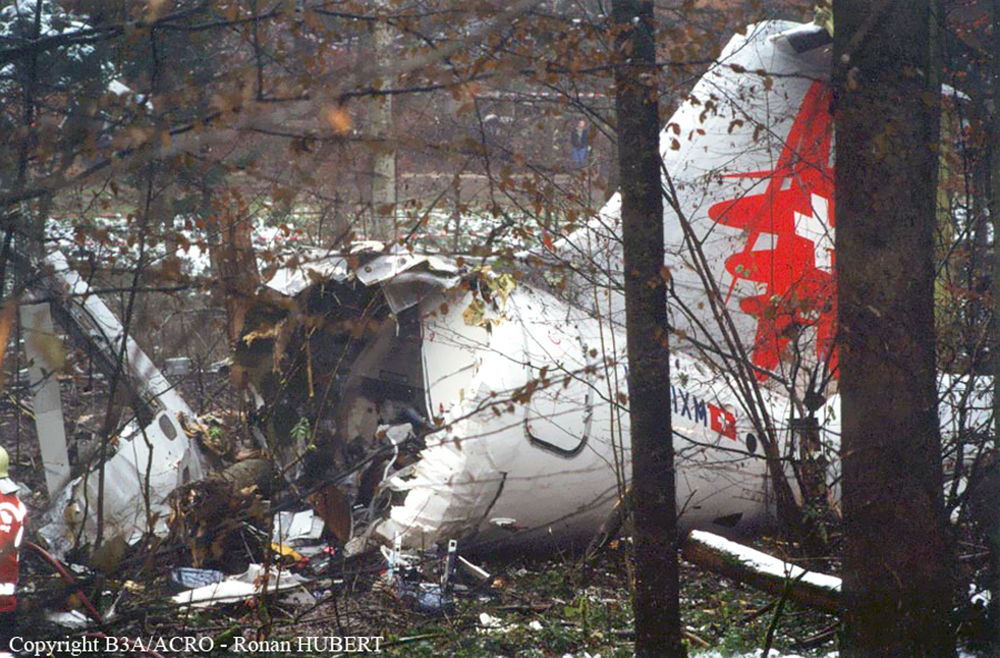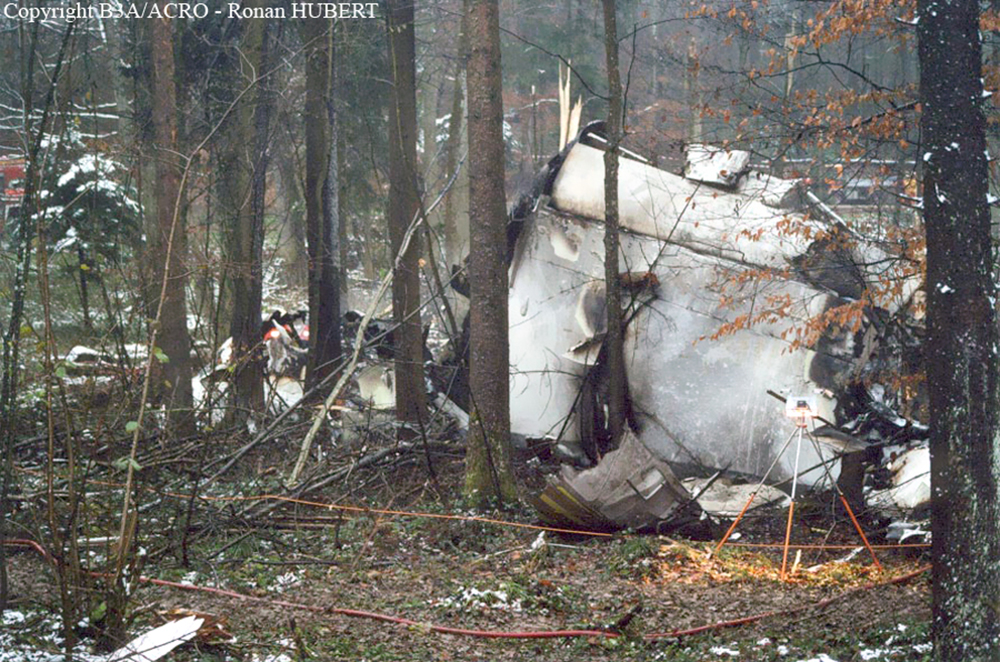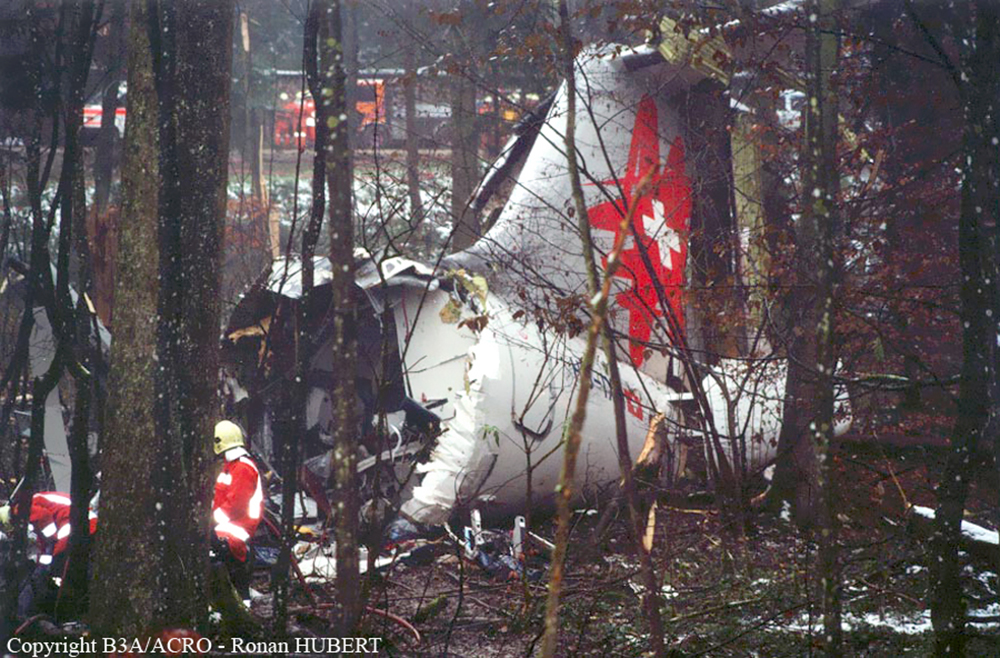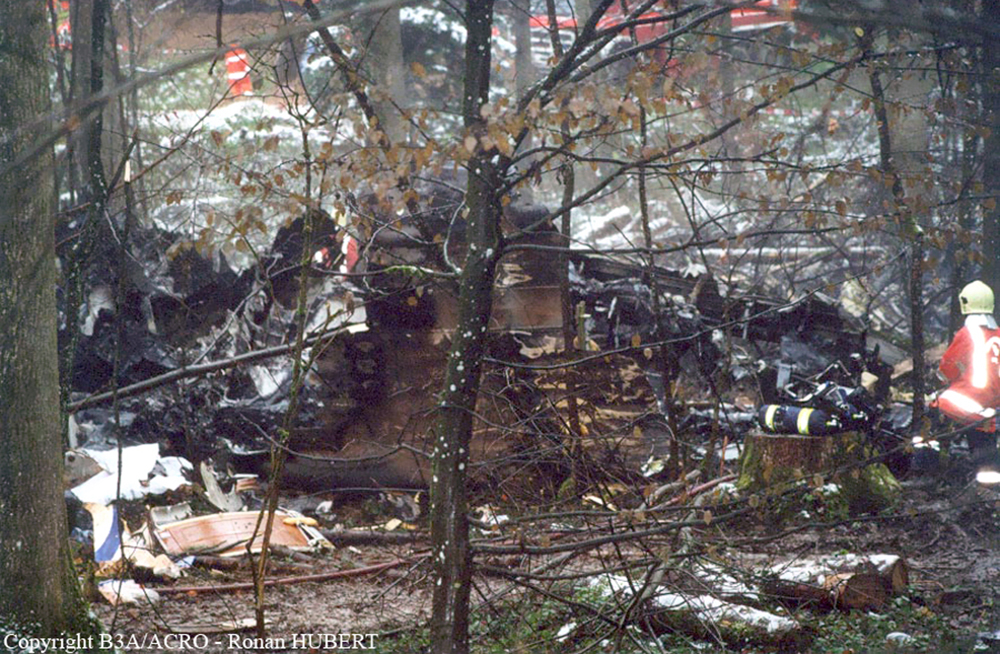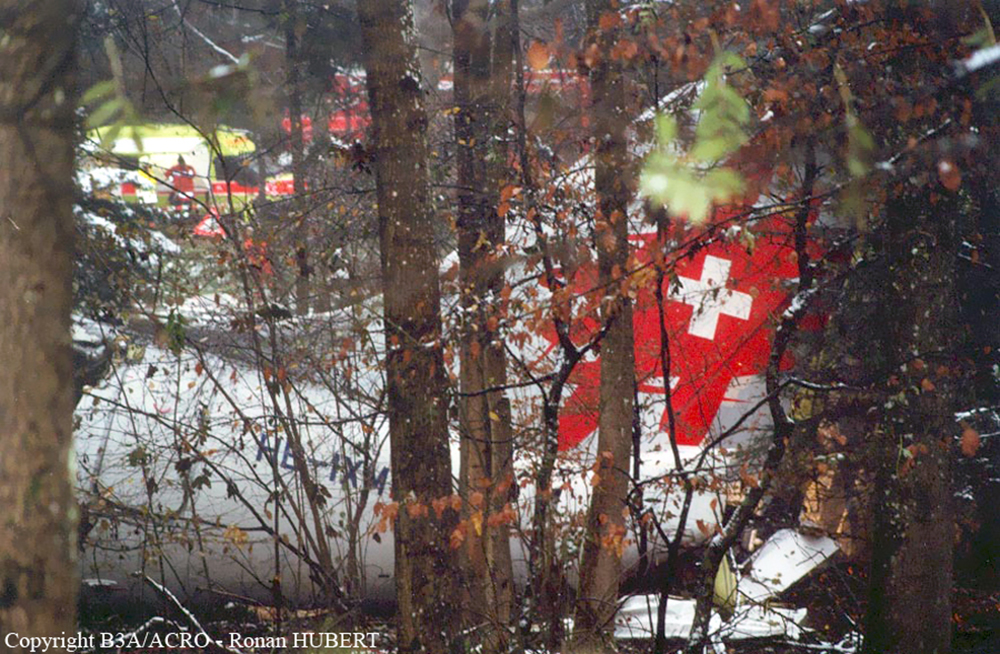Country
Operator Image

Crash of a Saab 2000 in Werneuchen
Date & Time:
Jul 10, 2002 at 2042 LT
Registration:
HB-IZY
Survivors:
Yes
Schedule:
Basel - Hamburg
MSN:
2000-047
YOM:
1997
Flight number:
LX850
Crew on board:
4
Crew fatalities:
Pax on board:
16
Pax fatalities:
Other fatalities:
Total fatalities:
0
Captain / Total hours on type:
2350.00
Copilot / Total hours on type:
1732
Aircraft flight hours:
12303
Aircraft flight cycles:
12069
Circumstances:
The twin engine aircraft departed Basel-EuroAirport on a flight to Hamburg with 16 passengers and four crew members on board. While descending to Hamburg, weather conditions deteriorated rapidly and due to thunderstorm activity with heavy rain falls and strong winds, the crew was unable to land at Hamburg-Fuhlsbüttel Airport and decided to divert to Bremen. Unfortunately, weather conditions were so poor that the crew was unable to land in Bremen, Hanover and Berlin-Tegel Airport as well. Due to low fuel reserve, the crew informed ATC about his situation and was vectored to Werneuchen, a former Soviet military airfield some 60 km northeast of Berlin. Werneuchen's unlighted runway has a length of 2,400 metres but has no approach aids. ATC warned the crew about the presence of a one metre high earth embankment across the runway, some 900 metres past the runway threshold which was there to avoid illegal car races. The remaining runway was still used for general aviation. Due to limited visibility caused by poor weather conditions, the crew was unable to see and avoid the earth embankment. After landing, the aircraft impacted the earth embankment, causing the undercarriage to be torn off. The aircraft slid on its belly for few dozen metres before coming to rest in the middle of the runway. All 20 occupants evacuated the cabin, among them two were slightly injured. The aircraft was damaged beyond repair.
Probable cause:
The following findings were identified:
- Dimension and intensity of the storm front and dynamics of the weather conditions,
- Inadequate use of resources in decision-making during the flight (proactive),
- Loss of alternative landing facilities at increasing time pressure (reactive),
- Landing of the aircraft outside the operating area of an aerodrome,
- Collision with the embankment due to the non-detection of an obstacle.
Systemic causes:
- Inadequate information on weather conditions and development before and during the flight,
- Inadequate information on the Werneuchen Special Airfield due to an ambiguous map display as well as misleading or lack of communication,
- Inadequate labeling/marking of the operational and non-operational areas of the airport.
- Dimension and intensity of the storm front and dynamics of the weather conditions,
- Inadequate use of resources in decision-making during the flight (proactive),
- Loss of alternative landing facilities at increasing time pressure (reactive),
- Landing of the aircraft outside the operating area of an aerodrome,
- Collision with the embankment due to the non-detection of an obstacle.
Systemic causes:
- Inadequate information on weather conditions and development before and during the flight,
- Inadequate information on the Werneuchen Special Airfield due to an ambiguous map display as well as misleading or lack of communication,
- Inadequate labeling/marking of the operational and non-operational areas of the airport.
Final Report:
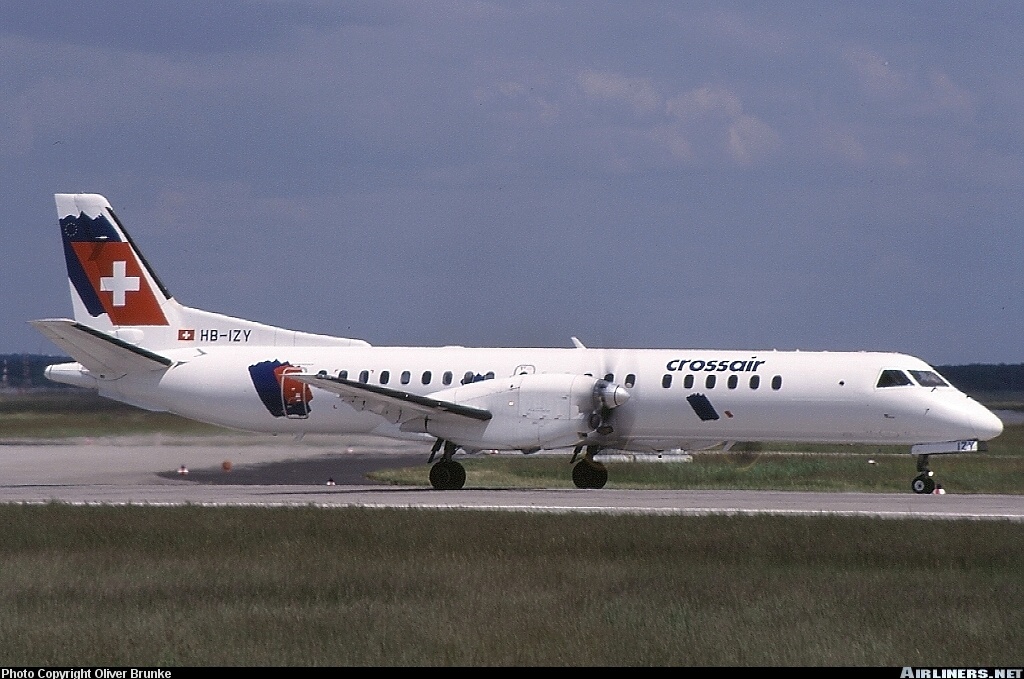



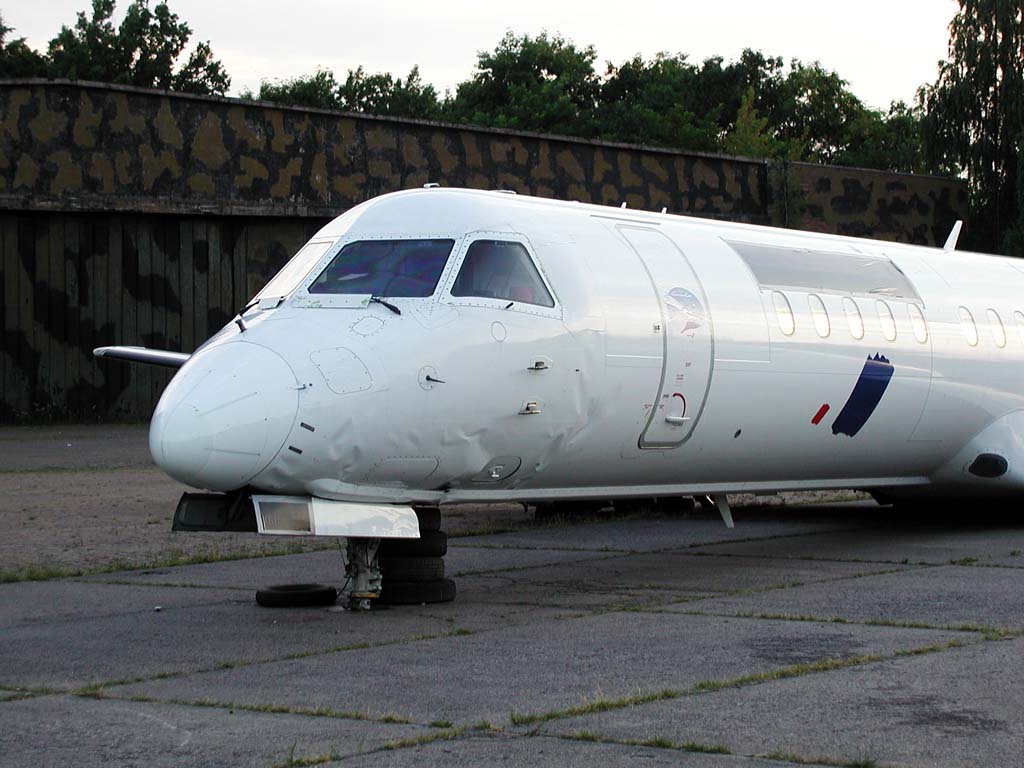

Crash of an Avro RJ100 in Zurich: 24 killed
Date & Time:
Nov 24, 2001 at 2207 LT
Registration:
HB-IXM
Survivors:
Yes
Schedule:
Berlin - Zurich
MSN:
E3291
YOM:
1996
Flight number:
LX3597
Crew on board:
5
Crew fatalities:
Pax on board:
28
Pax fatalities:
Other fatalities:
Total fatalities:
24
Captain / Total hours on type:
287.00
Copilot / Total hours on type:
348
Aircraft flight hours:
13194
Aircraft flight cycles:
11518
Circumstances:
On 24 November 2001 at 20:01 UTC the aircraft AVRO 146 RJ 100, registered as HB-IXM of the Crossair airline company took off in darkness from runway 26L at Berlin-Tegel airport as scheduled flight CRX3597 to Zurich. At 20:58:50 UTC, after an uneventful flight, the aircraft received the clearance for a standard VOR/DME approach 28 at Zurich airport.Ahead of the aircraft involved in the accident, an Embraer EMB 145, flight CRX3891, landed on runway 28 at Zurich airport. The crew informed the control tower that the weather was close to the minimum for this runway. At 21:05:21 UTC flight CRX3597 reported on the aerodrome control frequency. When the aircraft reached the minimum descent altitude (MDA) of 2,390 feet QNH at 21:06:10, the commander mentioned to the copilot that he had certain visual ground contact and continued the descent. At 21:06:36 UTC the aircraft collided with treetops and subsequently crashed into the ground. The aircraft caught fire on impact. Twenty-one passengers and three crew members died from their injuries at the site of the accident; seven passengers and two crew members survived the accident. The wreckage was found in the Geissbühl forest, 4,050 metres short of runway 28.
Probable cause:
The accident is attributable to the fact that on the final approach, in own navigation, of the standard VOR/DME approach 28 the aircraft flew controlled into a wooded range of hills (controlled flight into terrain – CFIT), because the flight crew deliberately continued the descent under instrument flight conditions below the minimum altitude for the approach without having the necessary prerequisites. The flight crew initiated the go around too late.
The investigation has determined the following causal factors in relation to the accident:
• The commander deliberately descended below the minimum descent altitude (MDA) of the standard VOR/DME approach 28 without having the required visual contact to the approach lights or the runway.
• The copilot made no attempt to prevent the continuation of the flight below the minimum descent altitude.
The following factors contributed to the accident:
• In the approach sector of runway 28 at Zurich airport there was no system available which triggers an alarm if a minimum safe altitude is violated (minimum safe altitude warning – MSAW).
• Over a long period of time, the responsible persons of the airline did not make correct assessments of the commander’s flying performance. Where weaknesses were perceptible, they did not take appropriate measures.
• The commander’s ability to concentrate and take appropriate decisions as well as his ability to analyse complex processes were adversely affected by fatigue.
• Task-sharing between the flight crew during the approach was not appropriate and did not correspond to the required procedures by the airline.
• The range of hills which the aircraft came into contact with was not marked on the approach chart used by the flight crew.
• The means of determining the meteorological visibility at the airport was not representative for the approach sector runway 28, because it did not correspond to the actual visibility.
• The valid visual minimums at the time of the accident were inappropriate for a decision to use the standard VOR/DME approach 28.
The investigation has determined the following causal factors in relation to the accident:
• The commander deliberately descended below the minimum descent altitude (MDA) of the standard VOR/DME approach 28 without having the required visual contact to the approach lights or the runway.
• The copilot made no attempt to prevent the continuation of the flight below the minimum descent altitude.
The following factors contributed to the accident:
• In the approach sector of runway 28 at Zurich airport there was no system available which triggers an alarm if a minimum safe altitude is violated (minimum safe altitude warning – MSAW).
• Over a long period of time, the responsible persons of the airline did not make correct assessments of the commander’s flying performance. Where weaknesses were perceptible, they did not take appropriate measures.
• The commander’s ability to concentrate and take appropriate decisions as well as his ability to analyse complex processes were adversely affected by fatigue.
• Task-sharing between the flight crew during the approach was not appropriate and did not correspond to the required procedures by the airline.
• The range of hills which the aircraft came into contact with was not marked on the approach chart used by the flight crew.
• The means of determining the meteorological visibility at the airport was not representative for the approach sector runway 28, because it did not correspond to the actual visibility.
• The valid visual minimums at the time of the accident were inappropriate for a decision to use the standard VOR/DME approach 28.
Final Report:

